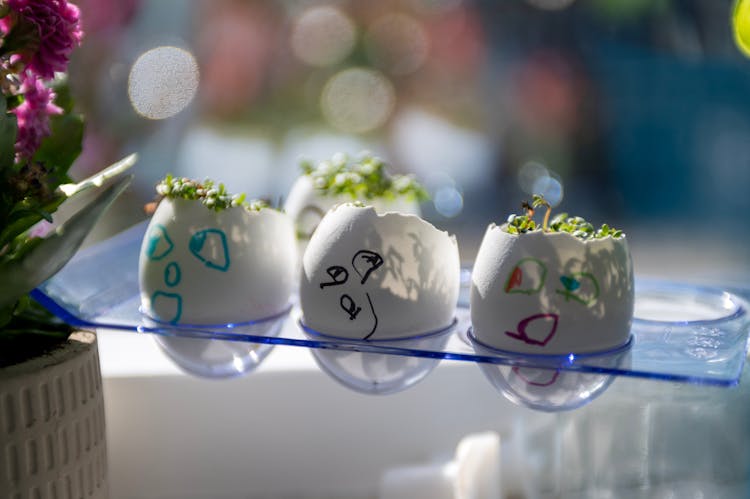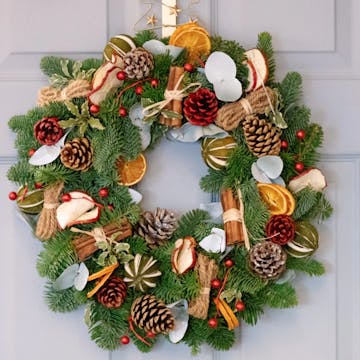How To Use Eggshells To Bring Your Garden To Life
Eggshells have so many uses, but often they end up in the bin. We've put together 3 easy uses for eggshells, that can help to spruce up your garden.

Whether you’re baking a cake or whipping up a tasty brunch spread, chances are you’ll be cracking open a few eggs. While both the yolks and the whites are commonly eaten (see our recipes page for inspiration), we tend to steer clear of those hard, crunchy shells.
Eggshells needn’t end up being tossed in the bin, though. They can easily be composted or given a second life around the home. Flowerbeds in need of some fertiliser? Or maybe you want to grow some new seeds for the spring/summer season? A few eggshells might just be your saving grace.
Here we take a look at some of our fave uses for eggshells that will not only reduce your food waste, but also give your garden a brand new boost of life.
Eggshells In Compost
Composting is hands-down one of the best ways to dispose of any inedible fruit and veg. Setting up a compost bin couldn’t be easier, either, and it can even be done on a balcony or on your kitchen countertop. Yep, you can compost without a garden.
Did you know that there are a whole bunch of things beyond skins, seeds and stalks that can be tossed into your compost bin? Coffee grounds, tea bags (the plastic-free ones, of course) and eggshells are all possible candidates, too. Making compost from food waste is a brilliant way of cutting down on your environmental footprint. When it comes to eggshells in compost, they can actually help enrich it thanks to the fact they contain calcium - an essential nutrient most plants need to thrive.
So, can you compost eggshells? Yes! Remember that eggshells are quite hard, so they can often take their time decomposing. To speed up the process, crush them up before adding them to your compost.
Eggshell In Plant Fertiliser
As well as putting them on your compost heap, you can also add crushed eggshells in soil. Known as egg fertiliser, it’s an inexpensive and often very effective way of enriching plants that are growing in pots or in the ground.
Thanks to their high calcium content, eggshells can benefit plants in a number of different ways. This includes reducing the acidity of soil and preventing blossom end rot, a particular blight of tomatoes that’s caused by - you guessed it - a lack of calcium.
The sharp texture of crushed eggshells can additionally keep pesky pests at bay, especially those slimy slugs that you might spot crawling all over your flowerbeds.
Making egg fertiliser is extremely easy. All you’ll need to do is:
- Crush your eggshells into a fine powder. To stop wild animals from smelling the echoes of raw eggs on your plants, give your eggshells a quick wash first.
- Add the crushed shells to a pan of boiling water, using about 10-20 eggs per 4.5 litres of water. The more eggshells you use, the stronger the fertiliser will be.
- Pour the eggshell fertiliser into a bottle or covered container. Leave for up to a week, stirring or shaking the mix once a day.
- Once it’s ready, you can pour your homemade egg fertiliser directly over the soil of your plants.
Fertilisers made from eggshells are good for plants like tomatoes, aubergines and strawberries. In other words, anything that bears fruit (that includes these fruits). Most flowers will also benefit, as will many succulents (just don’t overwater them).
Wondering what plants don’t like eggshells? It’s best to avoid using them on varieties that naturally prefer more acidic soil, such as azaleas and geraniums.
Starting Seeds In Eggshells
As well as making a crushed eggshell fertiliser to add to your soil, you can also use your eggshells in a slightly more innovative way. Ever tried to grow seeds in used yoghurt pots or jars? Well, how about growing them in eggshells instead?
Eggshells that have been neatly cracked in two make the ideal growing containers for new seedlings. All you’ll need to do is rinse your eggshell halves to get rid of any lingering egg.
Next, place them in an egg box to hold them upright.
You can then fill them with fresh soil and pop a seed or two into each shell. Lightly water them and watch as they grow. Once they get too big for their eco-friendly eggshell homes, transfer the budding new plants to pots or plant them directly into the ground.
Need Some More Zero Waste Tips?
Check these out!

8 Useful Tips For A Zero-Waste Festive Season
You needn’t miss out on the festivities while cutting down your consumption. Here are some ideas for how to have a zero-waste festive season.

The Ultimate Guide To Zero-Waste And The Zero-Waste Lifestyle
Did you know that about 500 million tonnes of rubbish has already been dumped across the world this year? And that figure isn’t set to go down anytime soon.

Use up your veg scraps in these soup recipes
As we head into the cooler months, hearty, warming bowlfuls of soup are most definitely the best way to empty your fridge and curb your food waste. Empty your vegetable drawer into your soup pot, make the most of the veggie scraps and throw in any cooking water leftover from cooking veggies or beans. Even the aquafaba leftover from a can of chickpeas, or a splash of the liquid from a jar of pickles or olives can perk up a boring soup.

